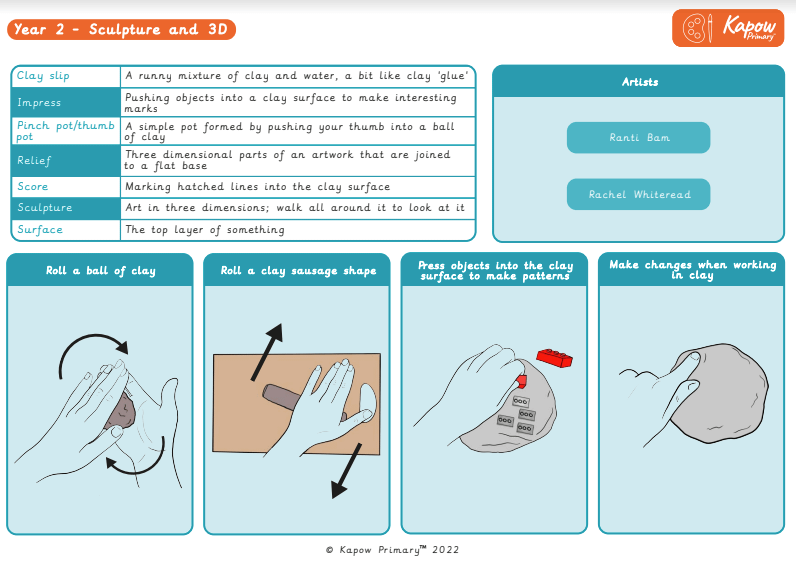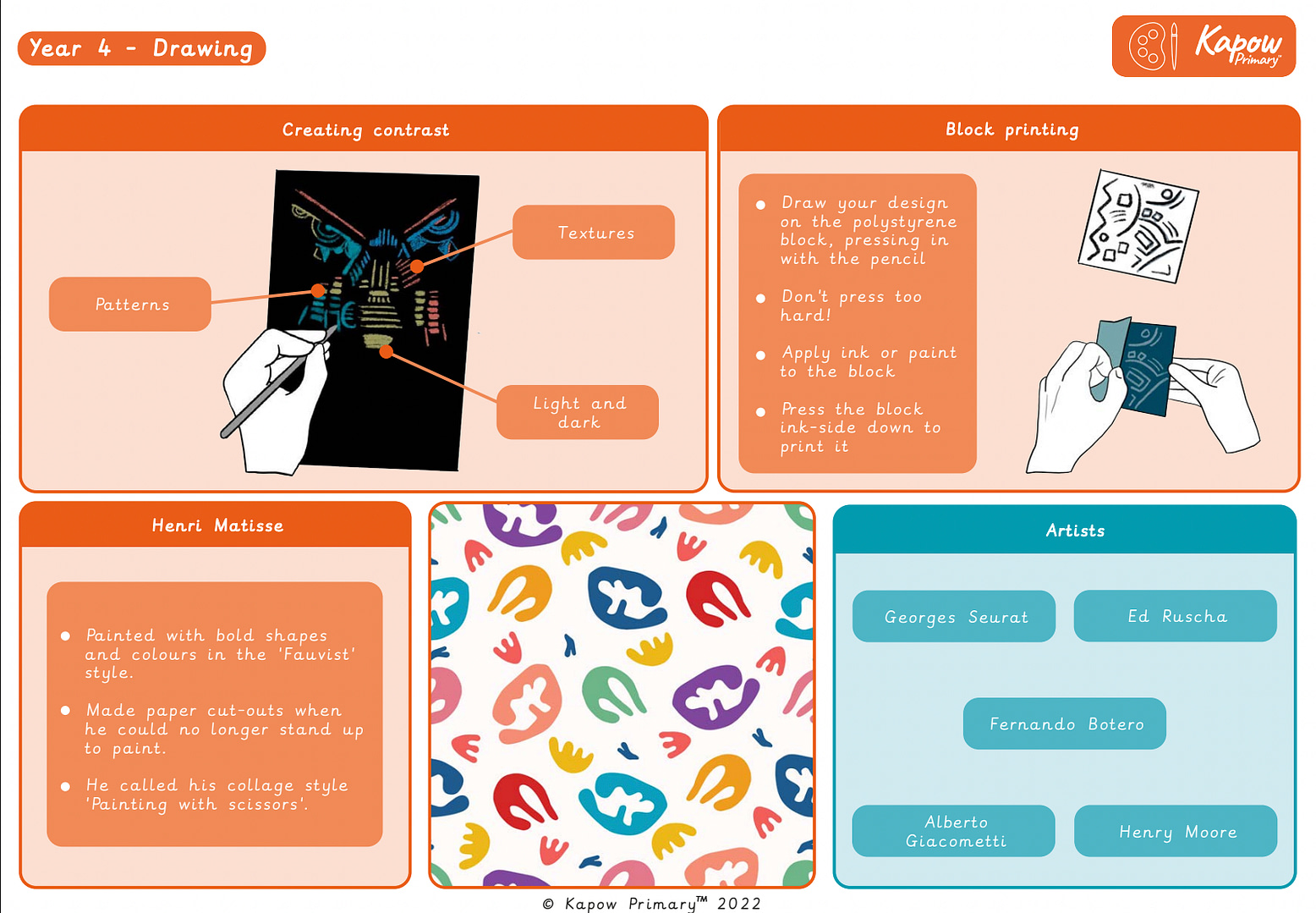
A Knowledge Organiser that captures the essential knowledge and skills learnt throughout the unit Art and Design, Year 4, Drawing: Power prints.
This resource is designed to support pupils as they explore drawing techniques through charcoal, pencil, and printmaking. It introduces key vocabulary such as proportion, tone, shading, composition, and wax-resist, while guiding pupils in mark making using charcoal and pencils, including hatching and cross-hatching. Pupils learn how to create contrast using patterns, textures, and light and dark, and are introduced to block printing techniques using polystyrene blocks. Influential artists such as Henri Matisse, Georges Seurat, Fernando Botero, and Henry Moore provide creative inspiration. This us unit is ideal for developing precision, creativity, and collaborative art-making.
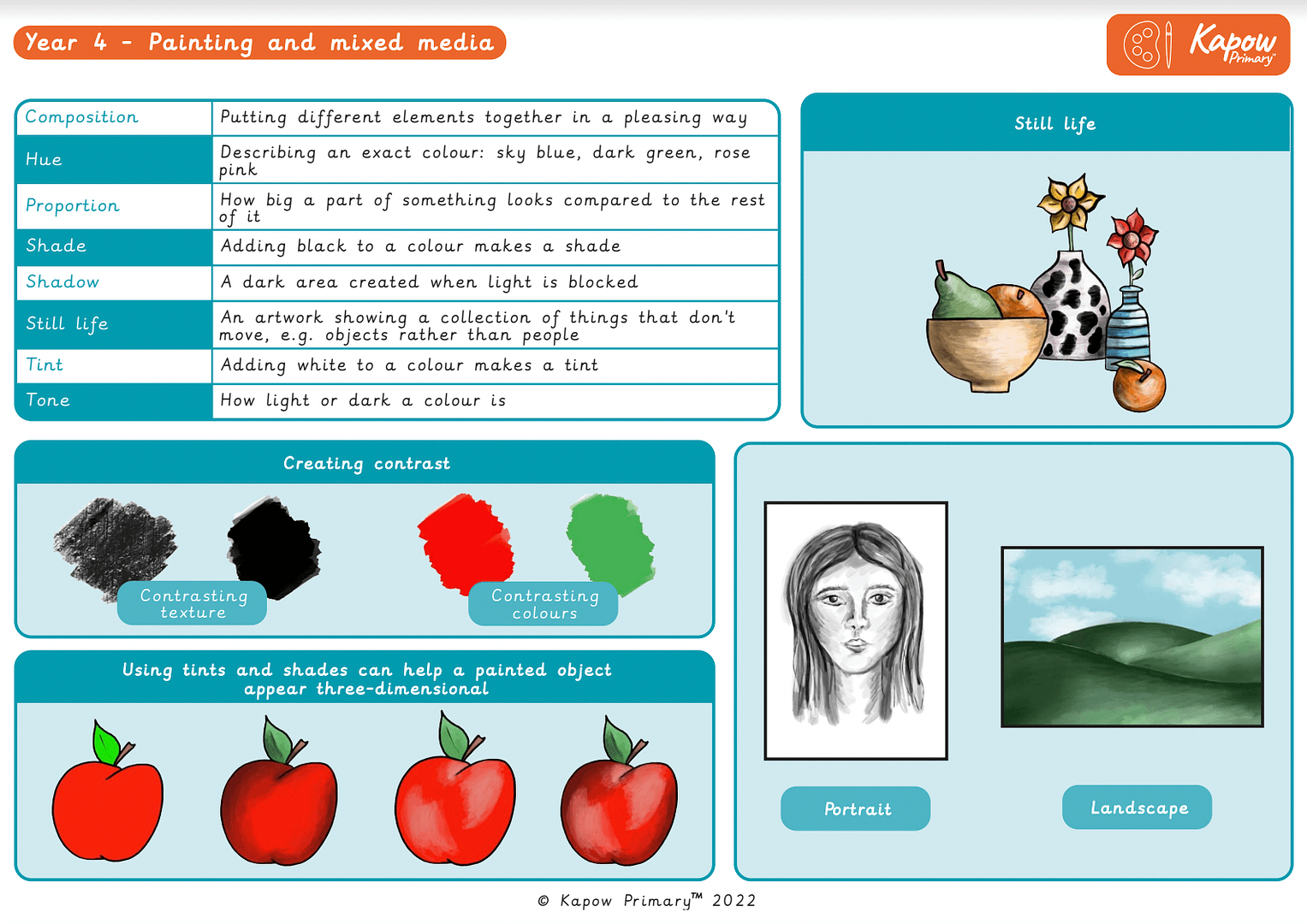
A Knowledge Organiser that captures the essential knowledge and skills learnt throughout the unit Art and Design, Year 4, Painting and mixed media: Light and dark.
This resource is designed to support pupils as they develop their understanding of contrast, colour mixing, and painting techniques through the exploration of still life. It introduces key terms such as hue, shade, tint, tone, and composition, and demonstrates how to create contrast using texture and colour. Pupils also learn techniques including dabbing, stippling, pointillism, and washes, while applying knowledge of proportion, light, and shadow to add depth and realism to their work. The unit strengthens practical knowledge and vocabulary essential to confident, expressive painting.
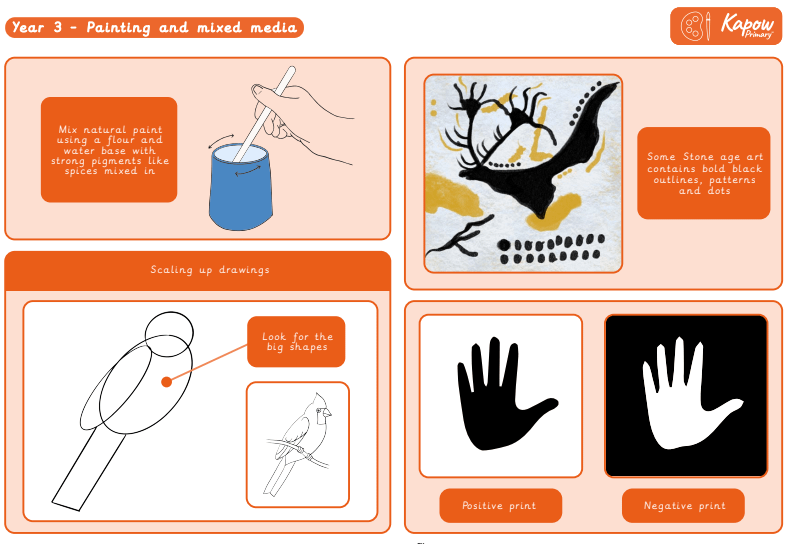
A Knowledge Organiser that captures the essential knowledge and skills learnt throughout the unit Art and Design, Year 3, Painting and mixed media: Prehistoric painting.
This resource is designed to support pupils as they explore prehistoric art through drawing, painting, and printing techniques. It introduces key vocabulary including charcoal, smudging, scale up, pigment, and Stone Age, helping pupils understand how natural materials were used to create early artwork. Pupils learn to mix natural paints, identify positive and negative prints, and experiment with texture and bold shapes, echoing ancient cave paintings. The unit encourages observation, historical awareness, and creative responses to early art forms.
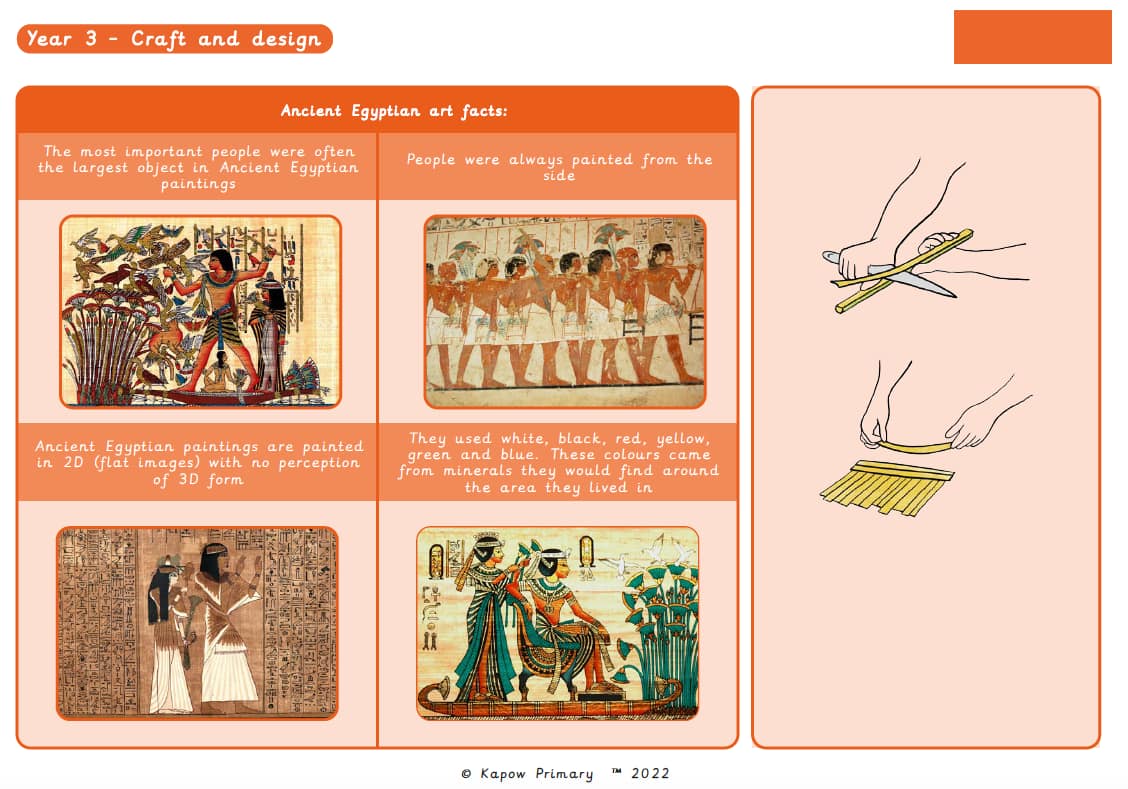
A Knowledge Organiser that captures the essential knowledge and skills learnt throughout the unit Art and Design, Year 3, Craft and design: Ancient Egyptian scrolls.
This resource is designed to support pupils as they explore Ancient Egyptian art and create papyrus-style paper artworks. It introduces key vocabulary such as composition, pattern, imagery, and technique, while helping pupils understand the historical and visual characteristics of Ancient Egyptian art—such as the use of flat, 2D imagery, symbolic colour choices, and hierarchical scale in paintings. With timelines and world maps for context, this unit enriches cross-curricular learning and inspires creative expression through historical art-making.
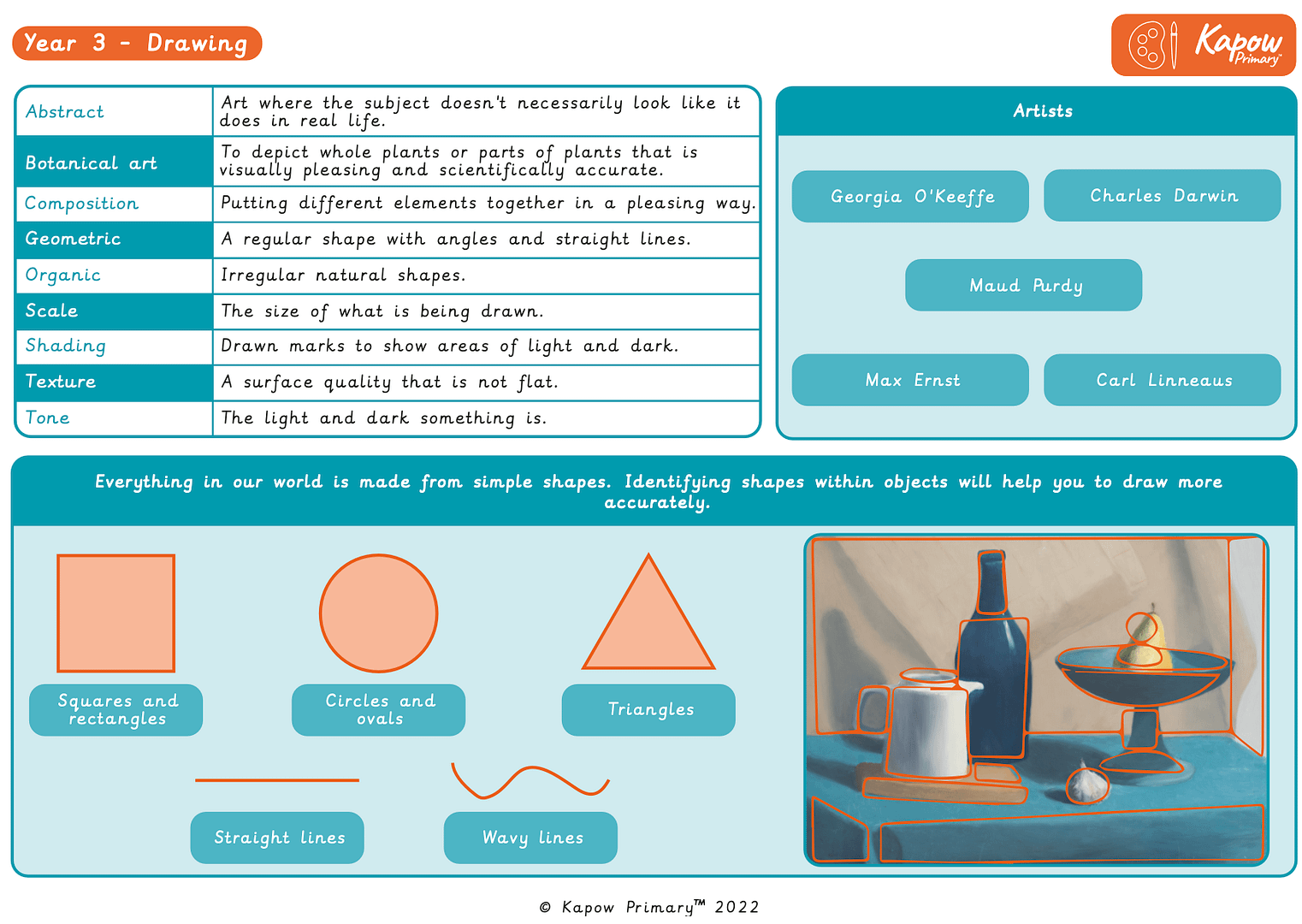
Aimed at pupils, a single page which gives key facts and definitions from the unit.
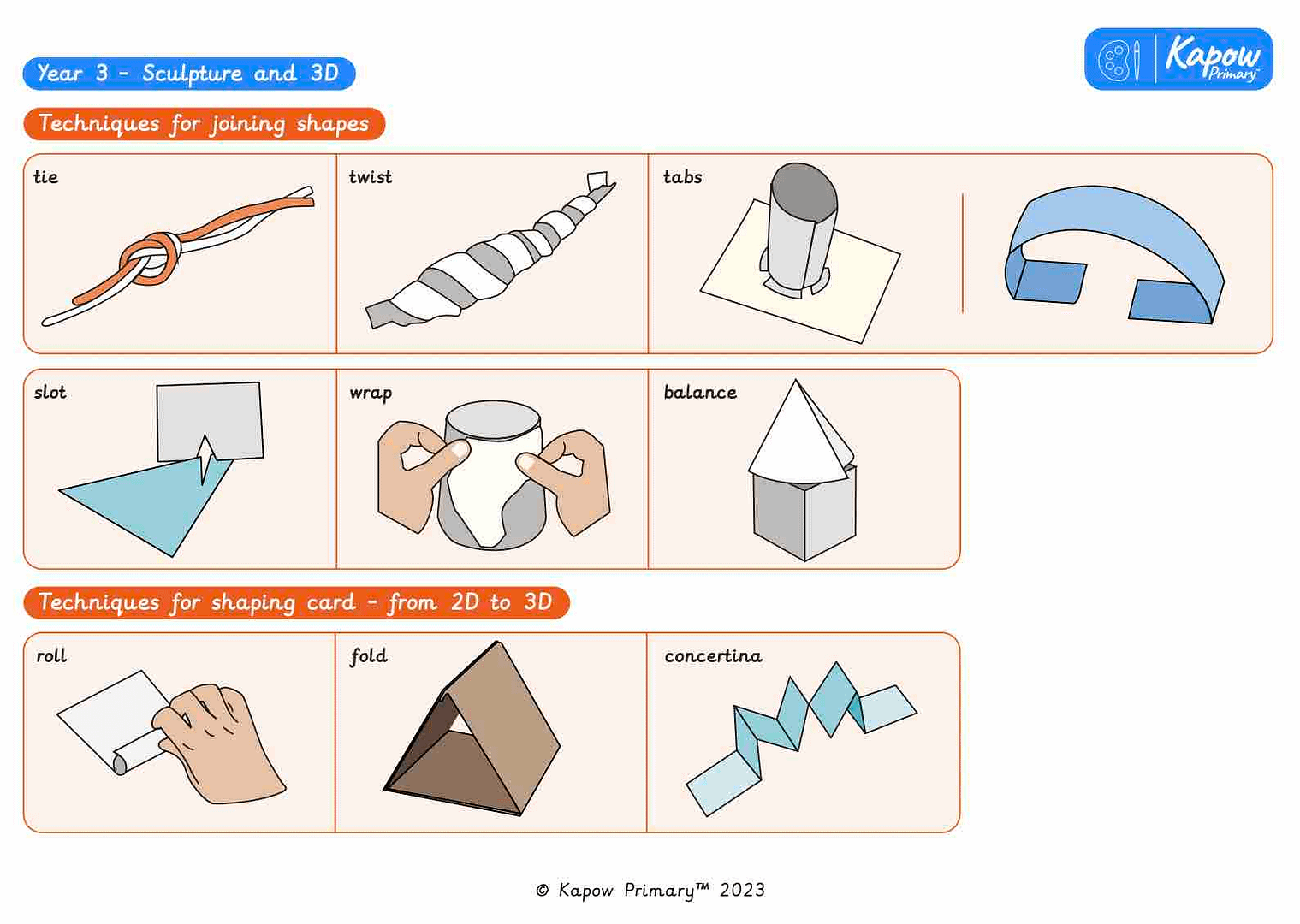
A Knowledge Organiser that captures the essential knowledge and skills learnt throughout the unit Art and Design, Year 3, Sculpture and 3D: Abstract shape and space.
This resource is designed to support pupils as they explore three-dimensional art through sculpture and model-making techniques. It introduces important vocabulary such as sculptor, structure, abstract, figurative, positive space, and negative space, while also highlighting the work of artists Anthony Caro and Ruth Asawa. Pupils are guided through practical joining methods like tie, twist, slot, tabs, and wrap, alongside shaping techniques including roll, fold, and concertina. The organiser encourages creative thinking and hands-on exploration of form, helping pupils transform 2D materials into dynamic 3D constructions.
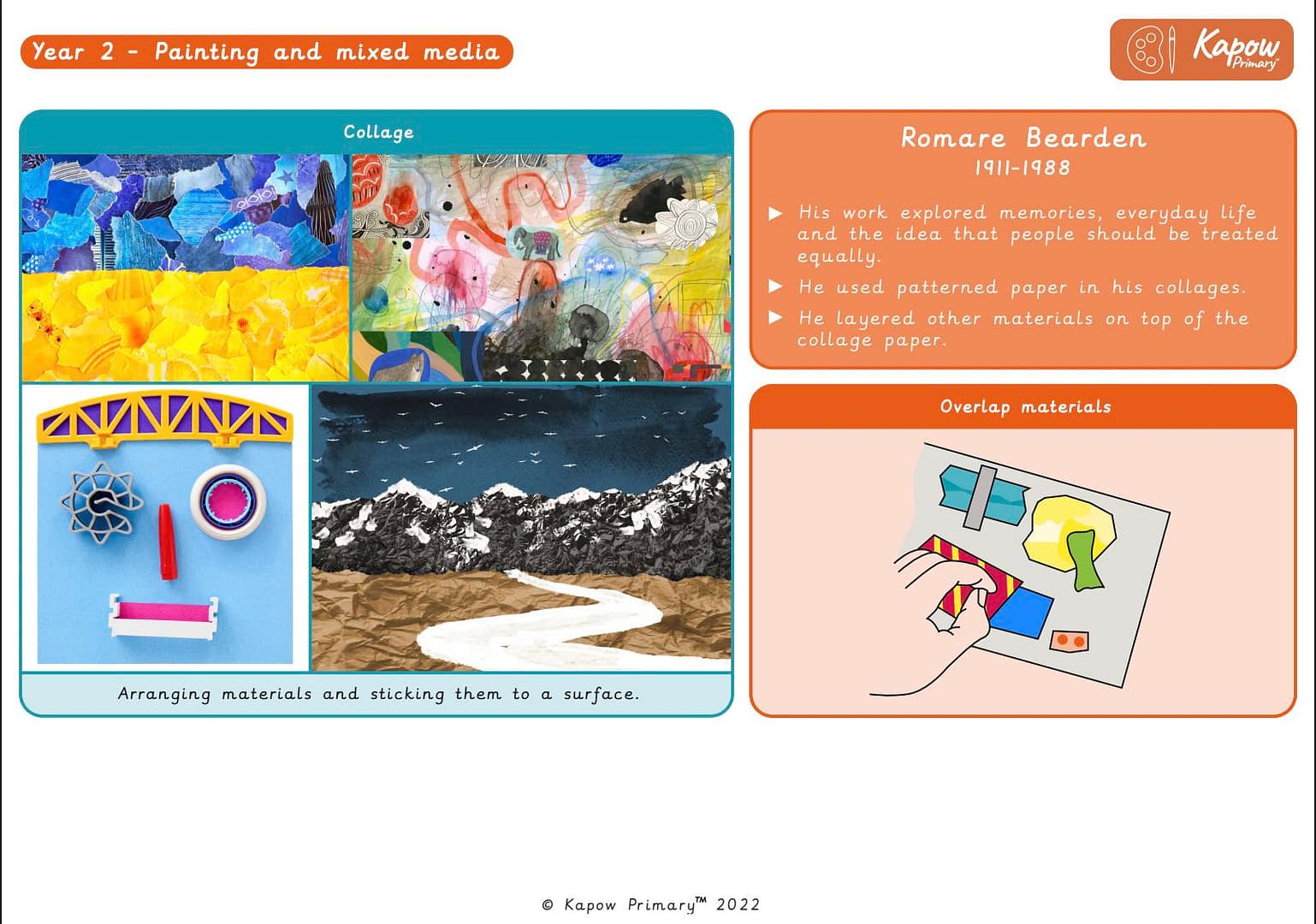
A Knowledge Organiser that captures the essential knowledge and skills learnt throughout the unit Art and Design, Year 2, Painting and Mixed Media.
This resource is designed to support pupils as they explore colour mixing, texture, and collage techniques. It introduces how to mix secondary colours from primary ones, create tones using black and white, and use different painting tools to produce a variety of textures. Pupils also develop skills in composition by arranging and overlapping materials in collage work. Inspired by the artist Romare Bearden, they learn how artwork can reflect memory and promote equality through layered, patterned designs. This unit builds confidence in combining painting and collage to create expressive mixed-media art.
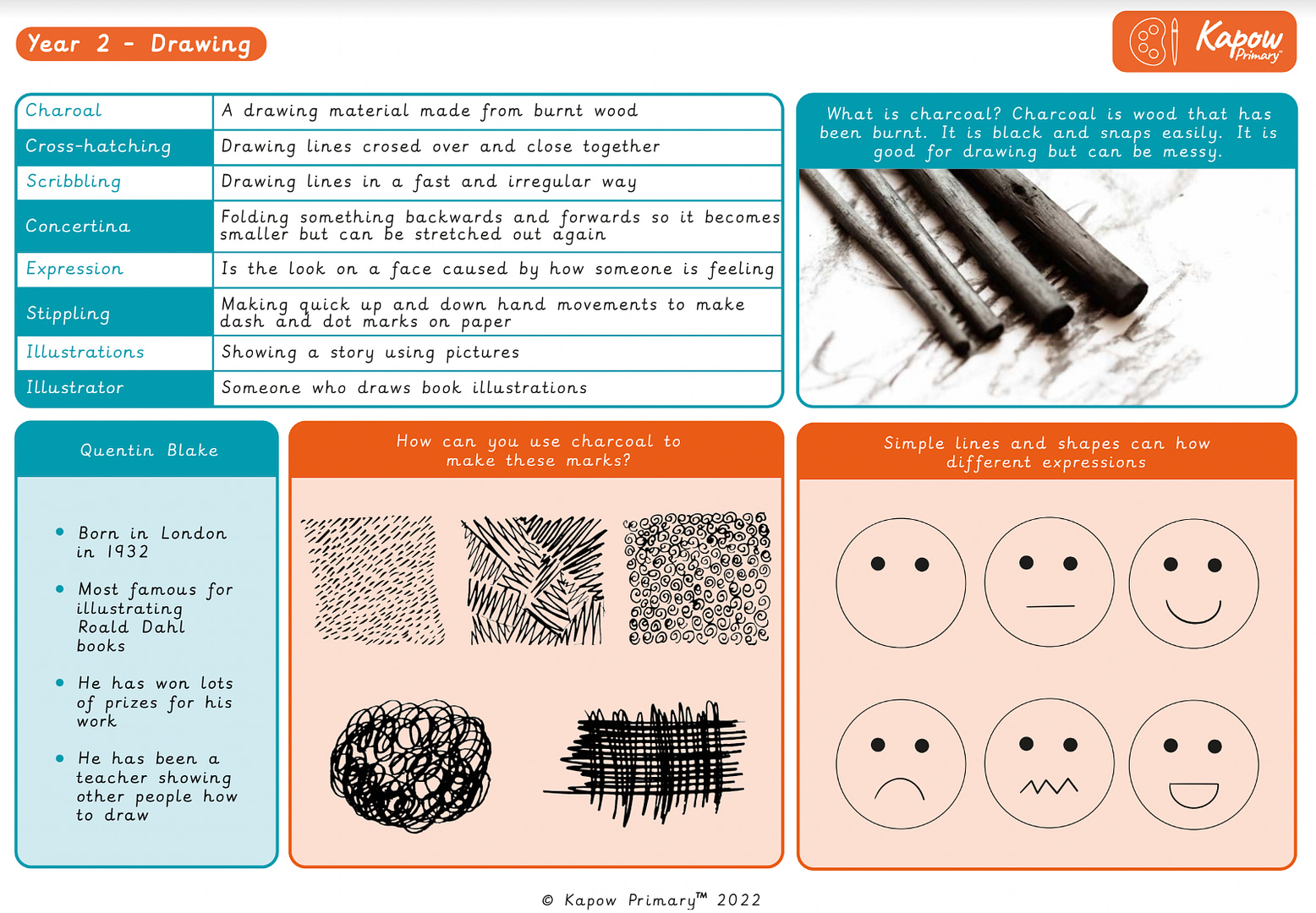
Aimed at pupils, a single page which gives key facts and definitions from the unit. Why not have a look at Kapow Primary’s other Art and design scheme resources for KS1?









